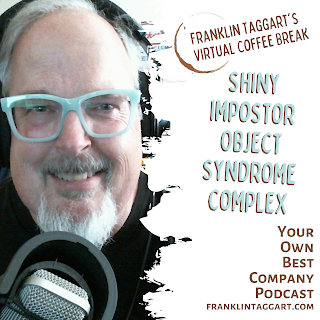Shiny Impostor Object Syndrome Complex
I've spent probably $100,000 on creative tools in my lifetime, and that's a conservative estimate. My output should be so much more based on the embarrassment of technical riches I possess. But Shiny Object Syndrome isn't the real problem here. That's a made-up name and another side of perfectionism that creative people deal with constantly. But I refuse to make it a pathology, it's just a feature of the process.
We all have psychological protective behavior patterns. That's a part of being human. For some people, it shows up as high achievement; for others, it appears as ambivalence in our commitments, and for others, it's a compulsion to never move out of our safe zones.
Impostor Complex is a similar condition. It's a way of protecting ourselves from exposure, embarrassment, and failure. And it's a part of almost every creative person's life that I've come across, including my own.
Creative people learn to work in spite of these protective tendencies. We take risks, we try new things, and we fail repeatedly in order to get something just right. It's a part of the process for all of us.
When a client comes to me reporting Shiny Object Syndrome or Impostor Complex, or any other diagnosis you might find in a gossip magazine quiz, I ask them about what's really going on. What are they really afraid of that their protective mechanisms are kicking in? Getting to the heart of those fears makes the surface symptoms go away.
#fearishuman #egohatespain #youareok

